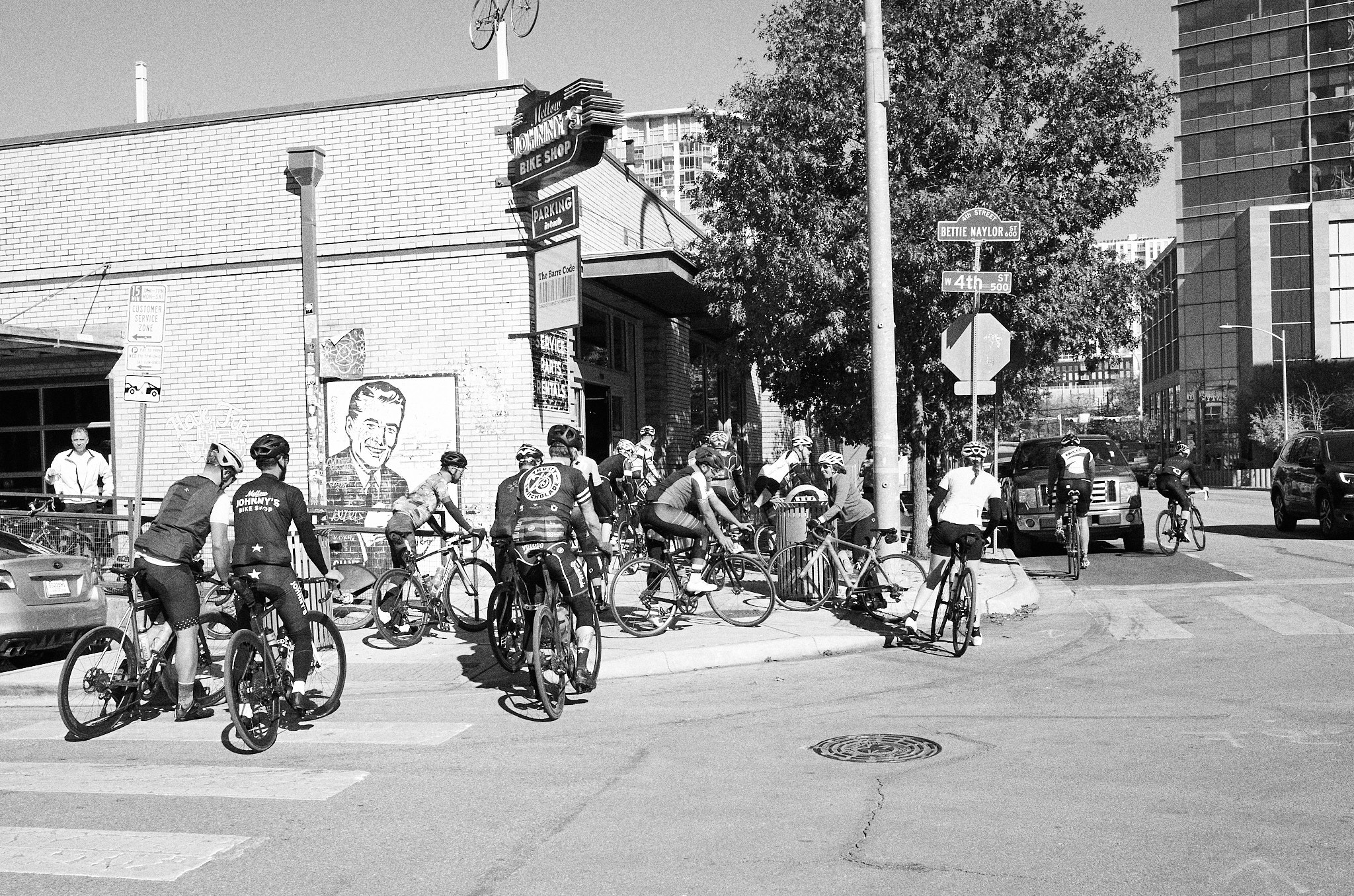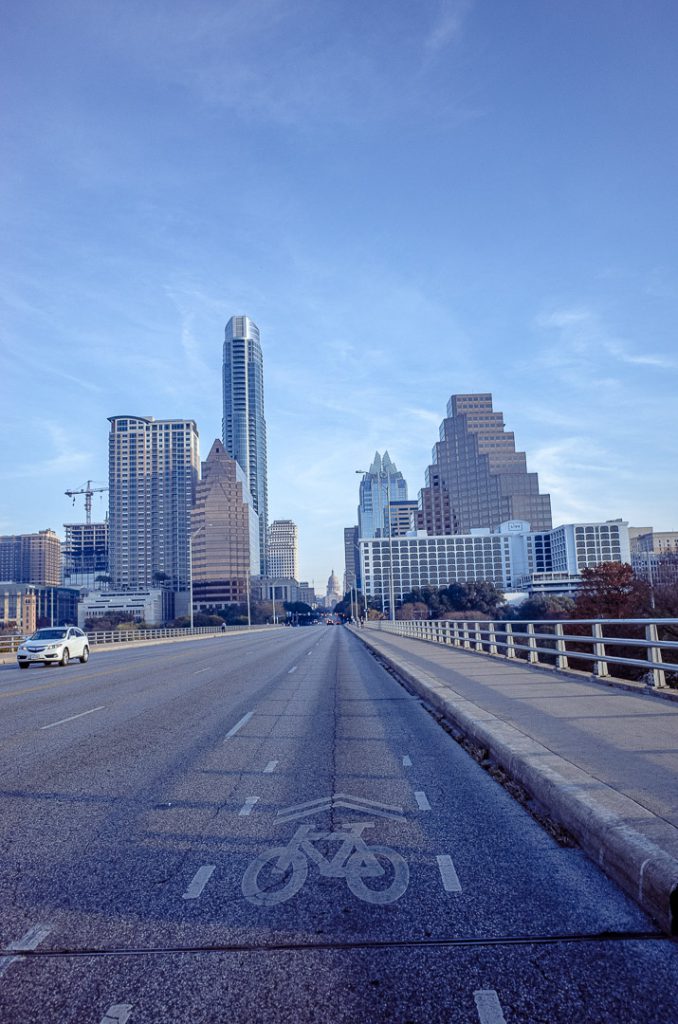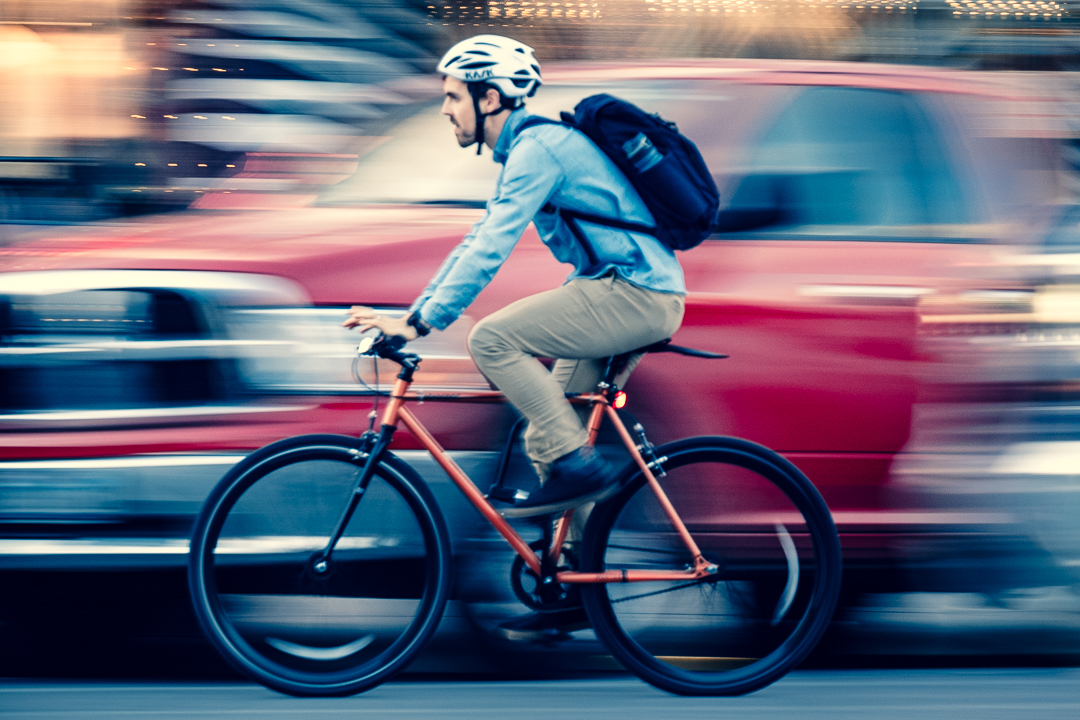Welcome to Austin, New Cyclist
Before COVID, Austin was an outstanding place to be. Wonderful bars and restaurants, great ways to experience nature, and a plethora of events every day of the week - all taking place in year-round nice weather (though sometimes a bit hot).
One more feather in Austin’s cap, and a big reason I continue to live here, is the city’s great cycling community. Austin is full of commuters, road cyclists, casual trail jaunt-ers anything in between (including some pretty awesome pedicab services). As with everything else, most cycling-related events have been cancelled this year, however, one thing that isn’t cancelled is enjoying the outdoors, which many have chosen to do by bike over the past several months. Nay, Covid has caused a bit of a national bike boom, with demand so high that many shops are repeatedly selling out of new stock, and maintenance services are backed up for weeks.
With so many new cyclists on the road, it’s a shame we can’t welcome them in the usual fashion. Someday, though, normalcy will return and, with it, all the things that make riding bikes in Austin great. You, new cyclist, should be ready when that day comes, so here’s an over of some of the more prominent contributors to the Austin cycling community.
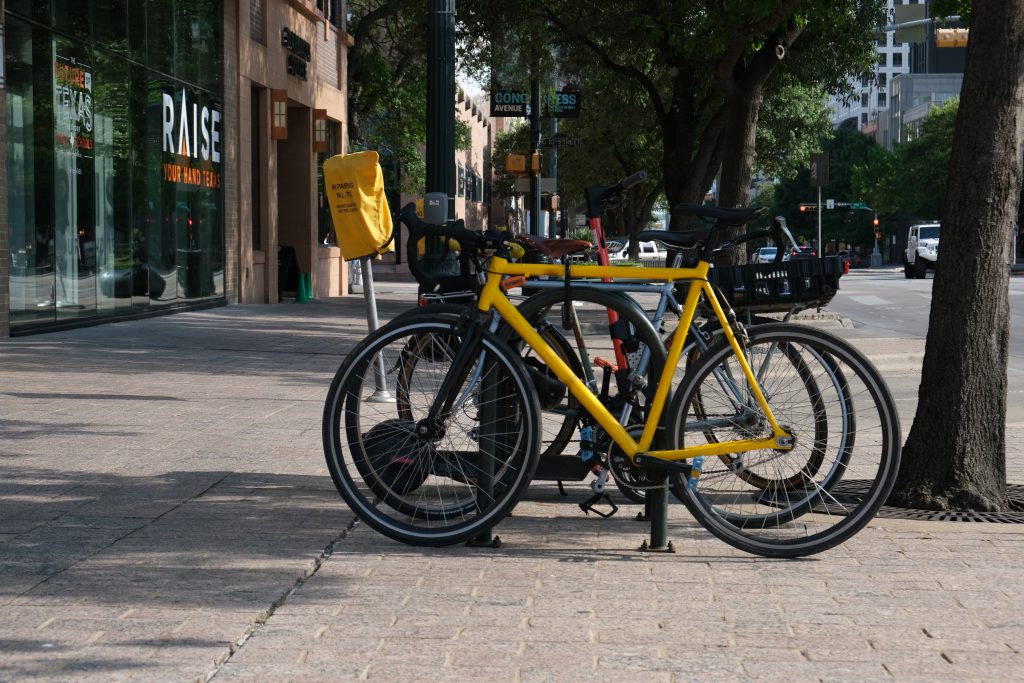
Organizations
Social Cycling Austin
Start here. Seriously. Social Cycling Austin is a FB group of over 12,000 members representing every possible cycling niche. The group is an amazing place to ask questions, find people to ride with, learn about Austin cycling, in general, and is also the home of the famous Thursday Night Social Ride, which has become an institution in the community. Think of SSA as your all-purpose, one-stop-shop for general cycling info in Austin.
https://www.facebook.com/groups/socialcyclingaustin
Bike Austin
It’s good to be a member of Bike Austin. This is an advocacy group that works closely with city government on bicycle issues - most importantly, safety. Bike Austin hosts rides, garners support for city projects and gives back to cyclists in the community. During COVID, the organization helped build support for Healthy Streets to allow pedestrians and cyclists to enjoy socially-distanced recreation without having to worry about automobile traffic. The more cyclists we can get behind Bike Austin the better.
Ghisallo Cycling Initiative
Ghisallo provides bike-related educational programs to Austin’s youth with the aim of creating lifelong cyclists, and also normalizing the use of bikes for transportation. The group conducts clinics focused on safe riding as well as numerous bicycle maintenance programs. If you’re a parent who wants to bring some cycling education to your child’s school, Ghisallo is a great place to start.
Violet Crown
Violet Crown is the oldest and largest cycling club in Austin, and they have the old newsletters and photos to prove it.If want to hear stories about Lance and the old Tuesday Nighter, Violet Crown is your jam. This organization facilitates numerous weekly group rides, and you’ll likely see riders sporting VC kit at other group rides as well. If you’re getting more serious about cycling and want to ride with faster groups or are considering racing, Violet Crown is a great place to get started.
Yellow Bike Project
Ya know all those micro-mobility scooters and bikes you see sitting all over the city? Well, Austin’s Yellow Bike Project was an early adopter in this area. In 1997, they repaired hundreds of bikes, painted them yellow and put them on the street for Austinites to use for their daily transportation needs, for free! Unfortunately, human nature got in the way and the project eventually fizzled out. Still, the organization remains and is an outstanding resource for purchasing reasonably priced bikes in Austin, as well as learning to repair your own bike. YBP is a community bike shop, offering classes, open community shops and even an earn-a-bike program, in which you can earn a free bike in exchange for volunteer hours. I highly recommend you visit the shop to see what it’s all about.
Coffee Outside ATX
#CoffeeOutside is a national community of cyclists who meet up for, well, coffee outside, and #CoffeeOutsideATX is Austin’s iteration of the group. Multiple different meeting places are used that showcase the city’s many outstanding parks. This is a small gathering, but a fun thing to do and good way to meet people if you’re new to Austin.
https://www.instagram.com/explore/tags/coffeeoutsideatx/
Bike Shops
Austin is chock full of bike shops. You’ll have no problem finding the one that fits your vibe. And though I hate to exclude any, as I’m thankful for all bike shops (even the bad ones), I’ll briefly include here those with which I have direct experience:
Mellow Johnny’s
Mentioned first because it’s the most famous shop in Austin. Mellow Johnny’s, so named because it sounds like the french maillot jaunt (yellow jersey), is owned by Lance Armstrong and is full of classic Tour de France bikes and other memorabilia. The cycling artifacts, in addition to it being a great shop, make photo-taking out-of-town visitors a common sight in the store. Is MJ’s a great shop for the casual cyclist? Sure, they’re friendly and have some nice hybrid/commuter bikes. Still, I perceive MJ’s to be more geared toward the serious racing cyclist. They carry a lot of high end stuff and prices can be shocking, especially if you’re simply interested in cruising the hike ’n bike trail.
https://austin.mellowjohnnys.com/
Cycleast
To me, Cycleast is the “hipster” shop. They have an amazing coffee shop on location and many of the bikes you see being sold or parked outside are of the steel (and sometimes single-speed) variety. But don’t be fooled, this shop hosts some amazing competitive riders and is also the home of Austin’s Phenom Cycle Club - a popular group in the racing community that holds the weekly Phenom 50 ride. I prefer to have my commuter serviced at Cycleast because they’re down-to-earth and reasonably priced (and within biking distance of my home).
Bicycle Sport Shop
I spend significantly more time at Mellow Johnny’s due to their co-located coffee shop, however, Bicycle Sport Shop is still my favorite shop in Austin, namely the South Lamar location. They’re huge and nationally known, with five locations in Austin, yet still manage to to feel welcoming and familiar. The owner, Hill Abel, is also an outspoken cycling advocate, which I appreciate. BSS caters to everyone, and is both an outstanding place to buy your first “real” bike, or your 10th high-end carbon race bike. Of all the shops in Austin, I’d say Bicycle Sport Shop appeals to the widest clientele.
Bike Farm
Let us not forget Bike Farm, a small shop slightly further away from my usual bubble of existence, but worth the trip nonetheless. Bike Farm carries brands that the other shops don’t, many of which are more reasonably priced. They also have a huge used a new-old-stock selection, which can be browsed online from the safety of your standing treadmill desk. Literature aficionados will also appreciate the titles on their service menu.
Other Events and Resources
CapMetro
Did you know that you can bring your bike on the bus? It’s true! Capital MetroRail also invites riders to bring their bikes. If you’re a commuter who lives a little further away and wants to use their bike for “last mile” purposes, CapMetro is a great way to do it. More transit centers are popping up around Austin and I can tell you from experience that it’s entirely possible to get around multi modally without driving.
https://www.capmetro.org/bikerack
Driveway Series
Even serious roadies who don't live in Austin know about The Driveway Series. It's arguably the best weekly criterium series in the country, and also a just a fun place to be. On Thursday evenings, you might see speed suit adorned riders making their way to the east side of town for the weekly race or returning at twilight for tacos and beer a La Mancha Tex Mex Tavern. Driveway is a culture and, in my opinion, one of the coolest thing about Austin. Here's an intense promo video from their site:
CotA Bike Night (is awesome)
Circuit of the Americas in an Austin landmark, and the only purpose built Formula One track in the United States. Its scale is hard to appreciate from afar, so why not see it up close? CotA Bike Night, held every Tuesday throughout the summer is fun way to ride without having to worry about traffic in a truly interesting environment. All kinds of riders are welcome. You’ll see teams doing workouts, families with kids, e-bikes and everything in between. Worried about climbing the 11% grade before turn 1? No problem. There’s a bypass to skip that portion of the track, but I recommend you take on the challenge at least once. Check out the view:
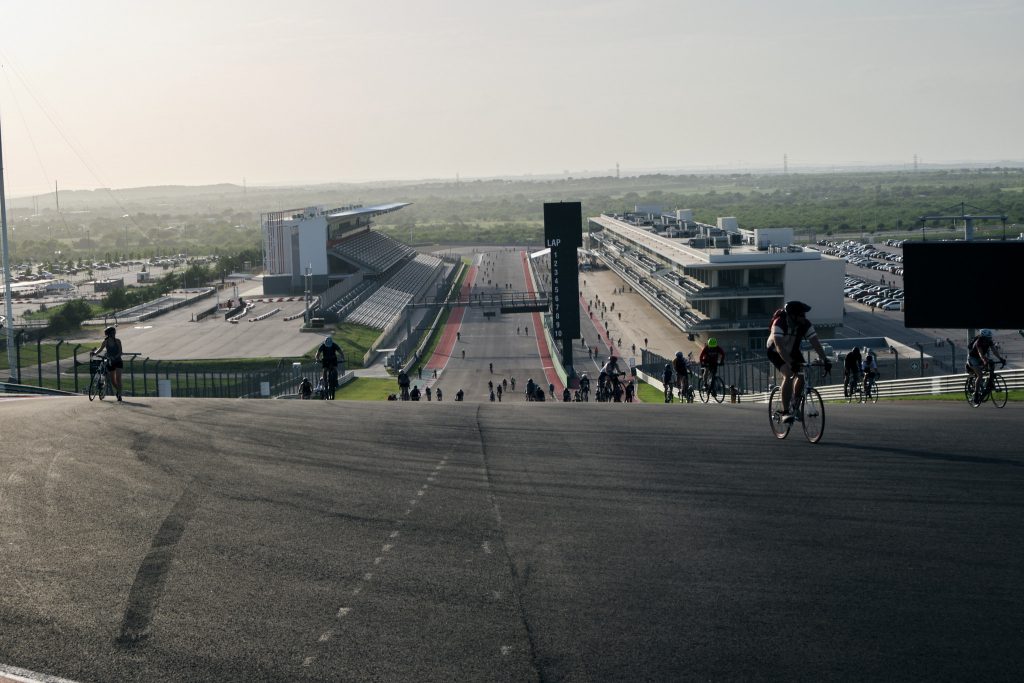
http://circuitoftheamericas.com/bike
The Veloway
The Veloway at Circle C Ranch Metropolitan Park was constructed in the early 90’s and was the first facility of its kind in the United States. The Veloway is a 23’ wide, 3.1 miles (5K) long bicycle tract that traverses the natural terrain. People travel from all over the metropolitan region to cycle here on a daily basis. The project was partially funded by a Texas Parks and Wildlife Grant. (I copy-pasted this)
https://austintexas.gov/department/veloway
Austin Bicycle Map
You’ll likely see this near the checkout in local shops, but it’s also available online.
Here’s the PDF - https://austintexas.gov/sites/default/files/files/COA_bike_map_v12_FULL_web.pdf.
And an interactive version - https://www.arcgis.com/apps/webappviewer/index.html?id=5d0284294f1b41bcad4ea956274a83b3&extent=3084002.7769,10048871.3815,3148002.7769,10081338.0481,102739
The map is well done, and I’ll say that I concur with most of the routes and comfort levels described.
Is Austin a bicycling Mecca? No. Riding here has its problems. There’s the ever-growing sprawl, crazy driving and a striking carelessness about transportation safety. Still, the city has a critical mass of riders that has normalized the sight of cyclists on the road and, as traffic gets worse, many of those who are able are choosing to get around by bike. The site of e-bikes during the morning and evening rush is getting quite common.
What makes riding in Austin great are the people. Take advantage of or get involved in the resources I’ve mentioned here and you’ll quickly find your niche.
A Commuter
Growing up in the suburbs of a small midwestern town, with low-traffic streets and trails connecting me to friends, my bicycle was freedom. At a moment’s notice, we could pedal to the next house, a nearby pond, a trail into the woods, even to school - a journey we sometimes undertook in the days when parental sensibilities still allowed young children to explore.
From among my earliest memories, I recall noticing the sensation of balance when my training wheels, installed slightly high, would leave the ground and, for a few seconds, stay that way as I rode as straight as possible. The day I had them removed, I took my bike into the driveway, aligned myself with the longest stretch available and, after only a few attempts, became a cyclist.
As is the case with so many American children, I grew out of cycling as I got older. There was an interest in mountain biking in my early teens, and I had a bike in college until it was stolen (sold by an acquaintance to buy weed, I suspect). After that, I didn’t ride for years. It wasn’t until my 30s, upon moving to a city with horrible traffic, but also the type of weather that allows year-round cycling and a modicum of bike infrastructure, that I began to ride again.
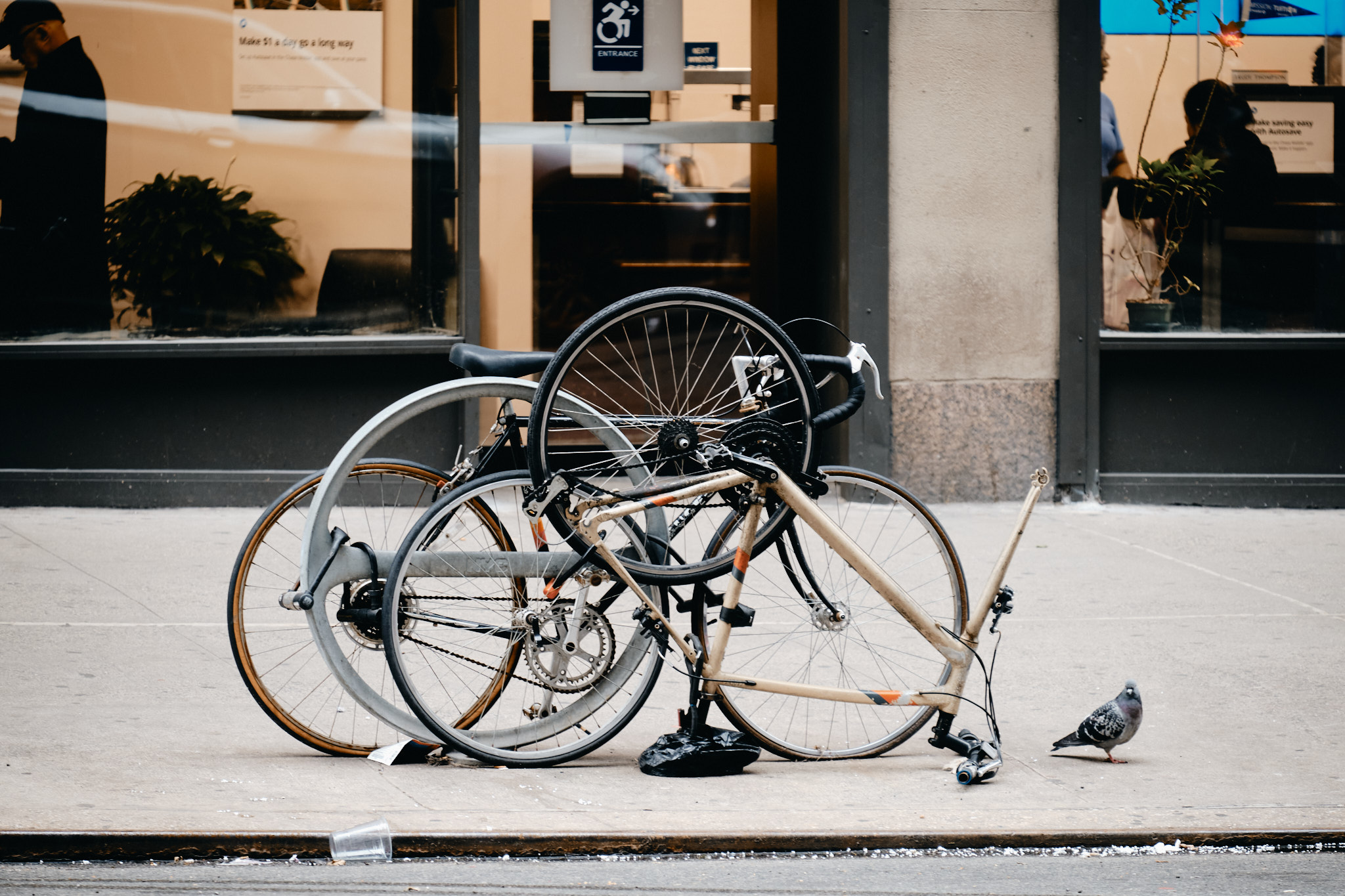
At first, it felt quite forced. The effort of going outside and exposing oneself to the slightly uncomfortable elements, of having to dress properly, expend effort, and take extra time to reach my destination, often led me to hop in the car. Yet, with a higher than average proportion of transportation cyclists in my city, this choice frequently left me feeling remorseful, as I’d inevitably see one braver and more determined than me out on their bike. I have a rule that I usually simply call the “You’ll Be Glad You Did Rule,” which says that if you’ll just do the more rewarding (and usually more challenging) thing, rather than giving in to your inertia, that “you’ll be glad you did”. This rule holds true every time I hop on my bike and, over time, car trips to the grocery store, coffee shop, barber, etc. dwindled to the point of my selling the car - a beater of a Honda Accord that, frankly, I was a little embarrassed to drive anyway.
Something about selling that car led me to feel that I had “officially” become a transportation cyclist, even if most of my trips were previously conducted in this manner. Sure, I still take Ubers, public transit, or occasionally ride the ever controversial e-scooter, but this multi-modal approach is centered around my bike. I never knew getting from A to B could be so gratifying and positive until I started traveling in this manner, however, every ride, no matter the setting, is overshadowed by the dark cloud of American infrastructure and our cultural ideas about transportation.
Formerly, as a frequent runner, I was often disgusted by how hostile our city environments are to humans. Everything we build is car-sized, and running through wastelands of traffic, gas stations and chain restaurants to find the “nice” parts of town was an education in how poorly designed our cities are for anyone but drivers. We’ve laid out the red carpet for multi-thousand dollar hunks of private property to glide through cities with ease without much thought given to the movement of humans.
While running along from the relative safety of the sidewalk, I never felt terribly threatened by the traffic shooting past me (though the noise can be stressful). Considering the number of pedestrians killed annually in the United States, perhaps this feeling was naive. Still, on foot, I felt that I could dart from the path of a straying vehicle and mostly exist outside of the world of motorists.
The experience is completely different on a bicycle. One is required to leave the sidewalk, crossing that white line to join the realm of the automobile. Here, the standards of civilized behavior no longer apply and something like the reptilian id seems to take over. At its most extreme, incidents of road rage lead drivers to intentionally threaten and injure, while our daily experience is filled with events such as honking (the eardrums of all those outside of the climate-controlled cage be damned), close-calls and speeding. Here on the road, whether protected by 3000 pounds of metal or 10oz of t-shirt, we’re no longer humans. Maybe it’s the tinted windows or the fact that we can’t look each other in the eye and say to ourselves, “That’s another person,” or perhaps its movement at speeds greater than our minds have evolved to comprehend. This reality is reflected in our speech and writing, where the vehicle is given agency over its driver: “Pedestrian killed after being struck by SUV”, “That car needs to get out of my way.” Even design standards for American vehicles reflect this. Imagine Ford or GM taking care to protect pedestrians by building lower grills on their fast-selling trucks, or drivers thinking twice about whether installing that brush guard and metal bumper will reduce the safety of other drivers.
It’s in this world that I, the cyclist, exist. Despite my clear vulnerability (and being being visibly human), I’m lumped into this non-human river of metal. Cruising home from the library or my favorite coffee shop, using trails when possible and roads when necessary, I become an obstacle rather than a person. Drivers may dangerously pass rather than wait the extra ten seconds necessary to reach a safe opening, despite the fact that we’re both racing for a red light in which I’ll quickly catch up. Actually, our average speeds are often closely matched during rush hour. If fortunate enough to have a bike lane on my journey, I’ll be gifted with glimpses of passing drivers on their phones, playing roulette with my life as they check their texts or type addresses into Google Maps.
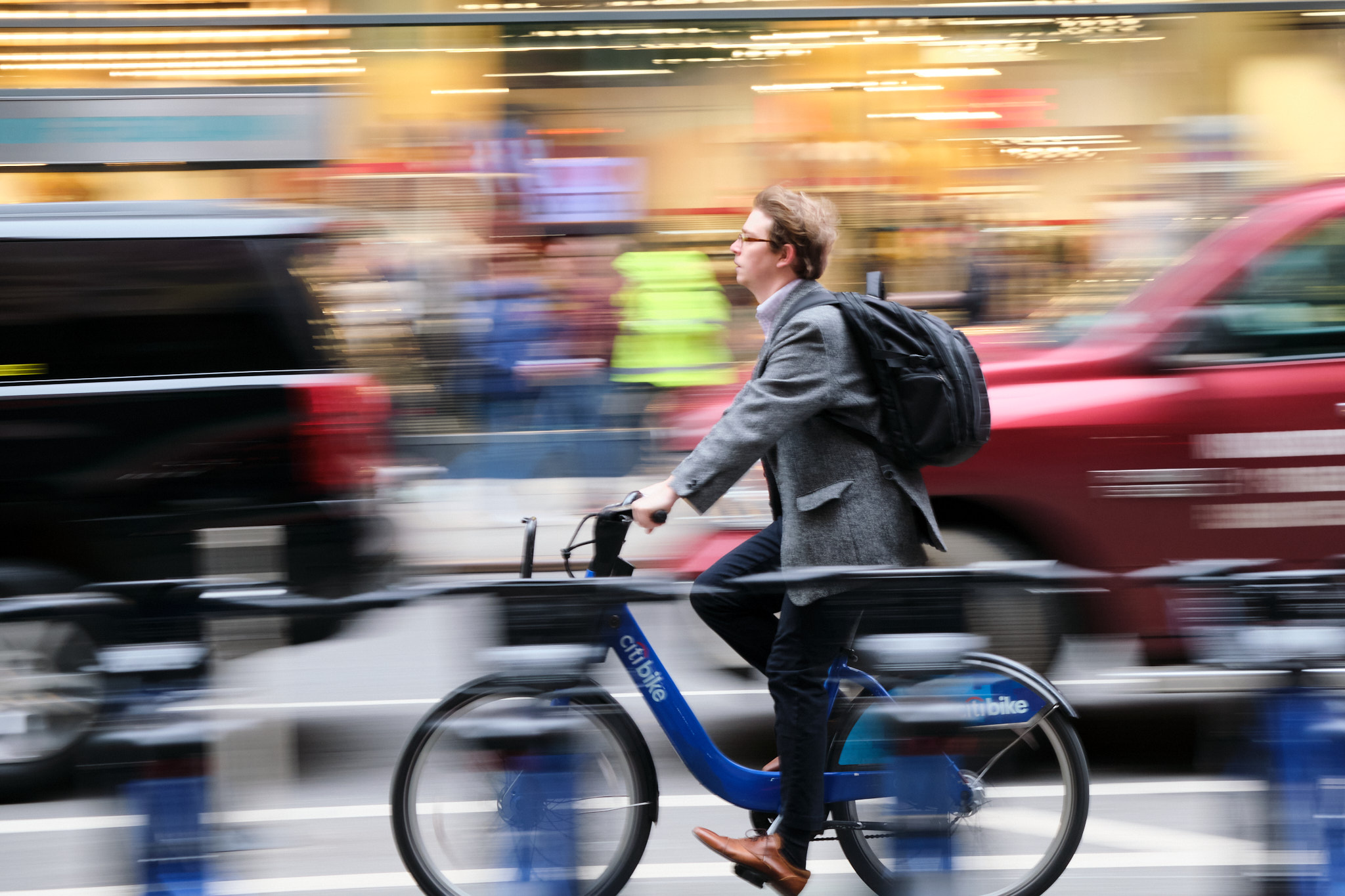
Arriving at a destination with that tinge of righteous anger at the unfairness of it all, the kind that you sometimes see come out in cyclists as they maliciously block the lane or swipe a vehicle’s mirror, I have to calm myself and realize that it isn’t the drivers’ fault. As a cyclist, I represent a tiny minority in a country where driving has been normalized and subsidized to a degree that most lack the ability to even comprehend an alternative reality. While riding, the sight of a police officer enforcing simple traffic laws, or sensible road engineering for intra-city travel, or well-implemented traffic-calming measures are so rare as to be practically nonexistent. All of this is exacerbated by sprawling development patterns, stacking more tax-revenue-sucking roads further and further from the city center until only the most determined and brave among us can even attempt to ride.
Cycling advocacy organizations of the type that support transportation cyclists are usually met with strong resistance when asking for safer infrastructure. The idea that one would want the freedom to travel outside of their expensive wheelchair is seen as absurd by the ruling generation, two-thirds of whom are overweight or obese. And despite the fiscal responsibility and “small government” ethos of legalizing density and self-sustaining infrastructure, my cycling is treated as a “Liberal” pursuit by conservative media, essentially settling the matter for half the country.
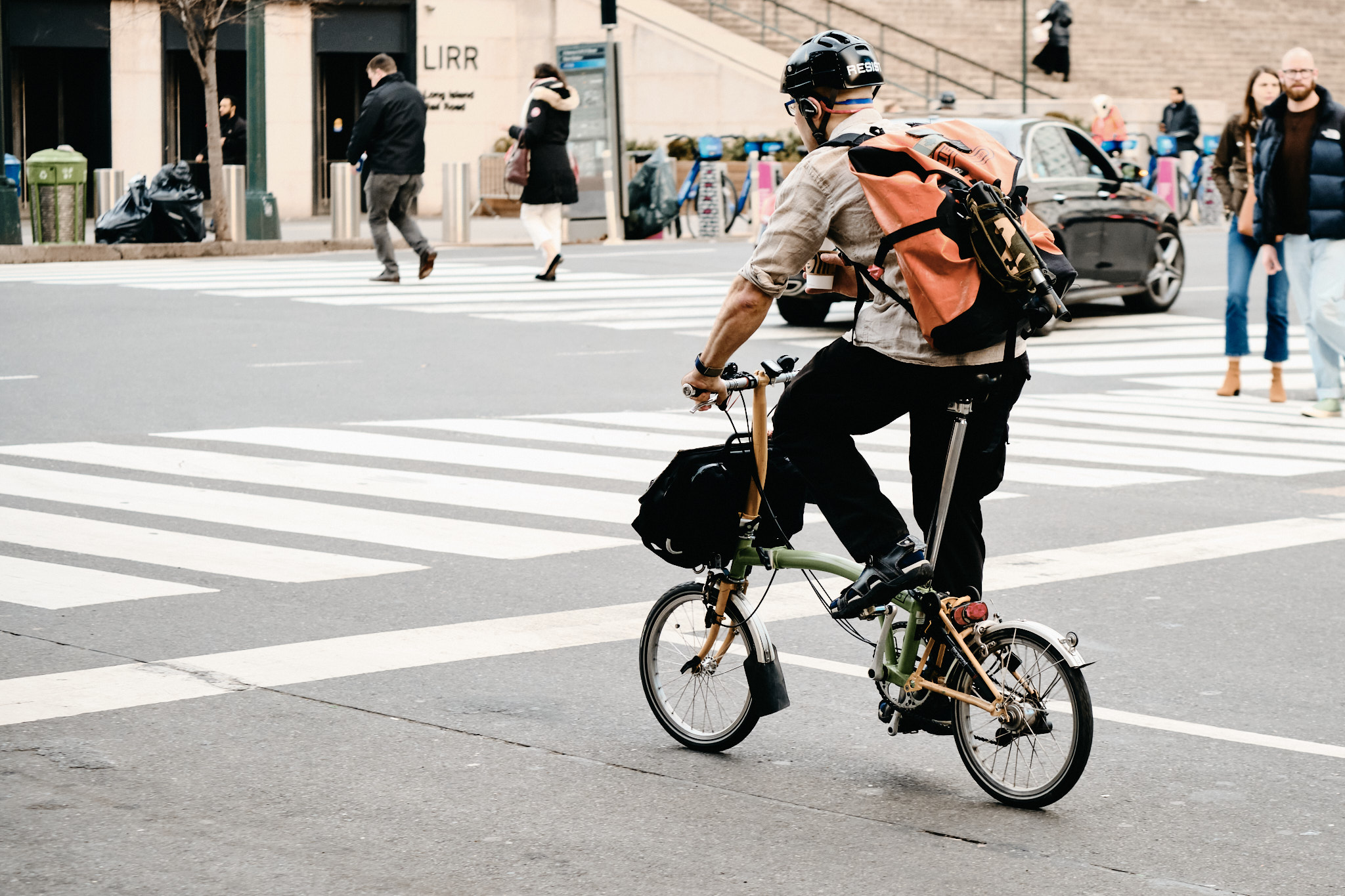
Where we do have bicycle infrastructure, it’s designed to serve the rich. In cities, the wealthy and educated ride for transportation just as often as the very poor - one group by choice and the other by necessity. Unfortunately, the poor will be riding in high traffic areas with no bicycle infrastructure and fast speed limits, often without training or an understanding of their claim on the public right-of-way. If these riders were to attempt to travel from city-center to home, their route would eventually empty into a concrete plain of high-speed, wide roads with intermittent sidewalks or the empty promise of a shoulder-painted bike lane along a 45+ mph street, more a product of failed policy than true infrastructure.
Despite the fact that cycling in America is a front row seat to how terribly we’ve failed at building cities, at how much we’ve bent to the will of the auto-lobby and ignored the basic needs of Americans, I can’t help but keep it up. At quiet hours or on low-traffic routes, passing through the city and its parks is often more a joy that enhances even the most mundane errands. Smelling the morning air and just being in the environment on a sunny morning, regardless of traffic, is one of the best parts of my day. On rainy afternoons, the empty streets are a secret world through which I can silently glide, the rain on my face instantly breaking the monotony of everyday life. “The journey is the destination” rings truer than ever on a bicycle, and on completing the errand, one is rewarded with a sense of satisfaction for having worked for something, for having the grit to walk out the door, briefly shedding modern comforts to do something for oneself (and for everyone else too).
The best part, though, is the humanness of it all. Bicycles lie opposite the isolation of automobile travel. Not only do you see the drivers, to whom you don’t exist, but also passing pedestrians, and runners in the park, and visitors to the dog run, and every other person you cross along the way, and they see you to too, another human going about their day. Cycling incites a sense of community that’s been lost to our soulless sprawl, big box store parking lots and long auto commutes. It’s addicting, and so what can I do but keep riding? To set an example, advocate for change, and hope that someday we remember that cities are for people.
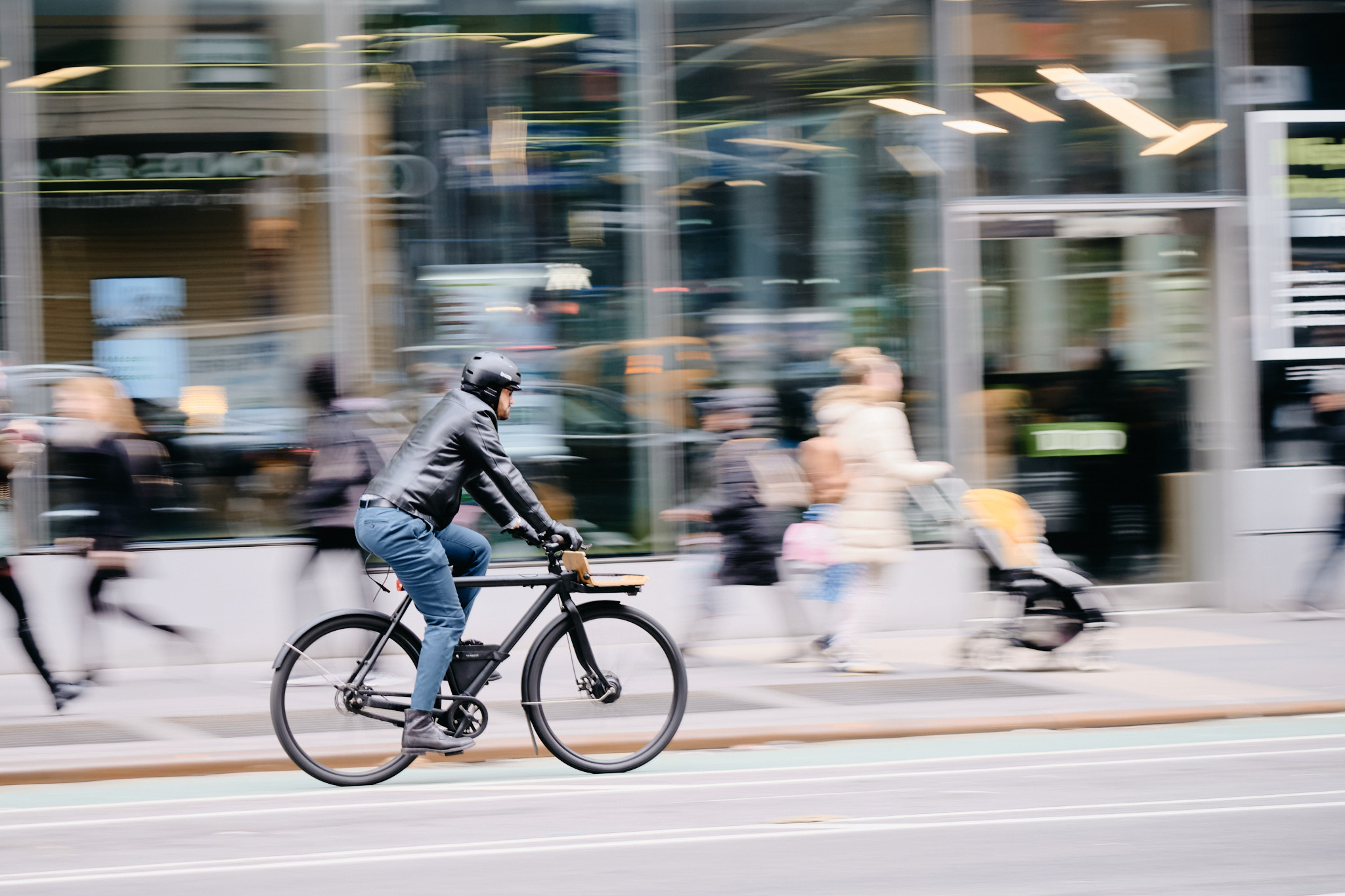
Bike for Your Country
Yes, for your country. While patriotic flags and sayings may often adorn large SUVs driven by soccer moms and suburban cowboys, it doesn’t take much effort to slap a flag sticker on your truck. Those who truly want to display their patriotism through mobility choose a mode of transportation quite the opposite from a world-burning Dodgy Ram.
The fact of the matter is that, flag-bearing or not, these vehicles take up an immense amount of space, not only in their immediate footprint or while idly parked (where they live 95% of the time), but also in the required road network, parking and general auto-centric development pattern needed for their utilization - a system that comes at a huge price to American citizens, both in direct costs and, also, indirectly in the form of lost productivity, excessive land use, inefficiency and the displacement of those who can’t afford to live close to where they work.
After 70 years of developing our cities for automobiles rather than humans, the average citizen has become somewhat “car blind”. Still, the case remains that alternatives exist. These alternatives are more efficient, cheaper, more “free market”, and better for the environment, yet the automobile remains “the answer” to most citizens, who know nothing else and, understandably, hardly have time to think about much more than making ends meet, let alone reading about transportation issues in their free time.
“Free market? Forcing bike lanes and trains down my throat isn’t free market,” you might say. This is understandable. Years of market-distorting laws favoring automobile transportation are what got us here, such as parking minimums, single-family residential zoning, square footage minimums, development requirements for wide, high speed roads - the list goes on. What’s resulted is a cycle of auto dependency where alternatives to automobile transportation have become impossible, with endless federal funds in the form of what amounts to payday loans to keep the auto-centric development churning. With unchecked state and federal road infrastructure funding , there’s no incentive to stop building cities outward into expensive non-places full of big box stores and cookie cutter snout-house subdivisions - places inhospitable humans not encased safely SUVs.
That’s where bikes come in. Your town, city, municipality, or village may not have acceptable transit service, everything is too spread out to walk, Uber-ing everywhere is prohibitively expensive, and autonomous vehicles are still a Silicon Valley fantasy. The bicycle, however, in all its high-efficiency glory, can move a human just far enough, just fast enough, to get them where they’re going without having to drive. No, if you live in the country and have to take Farm to Market 920 (i.e., Sprawl to Parking 920) fifteen miles to the grocery store, bicycling probably won’t work for you. If, however, you’re anyone from a small town dweller, up to and including a city slicker who has amenities within a reasonable distance of home - you can absolutely ride your bike for transportation.
Below is a picture of my “car”. Within a reasonable radius of my apartment, I run any errand I please without a second thought. Too hot? Humans sweat. Too cold? I’ll warm up with a little movement. Rain? Where I live, it doesn’t rain continuously, but I save enough not owning a car to justify buying some pretty awesome rain gear (or to be chauffeured to my destination in an Uber on special occasions).
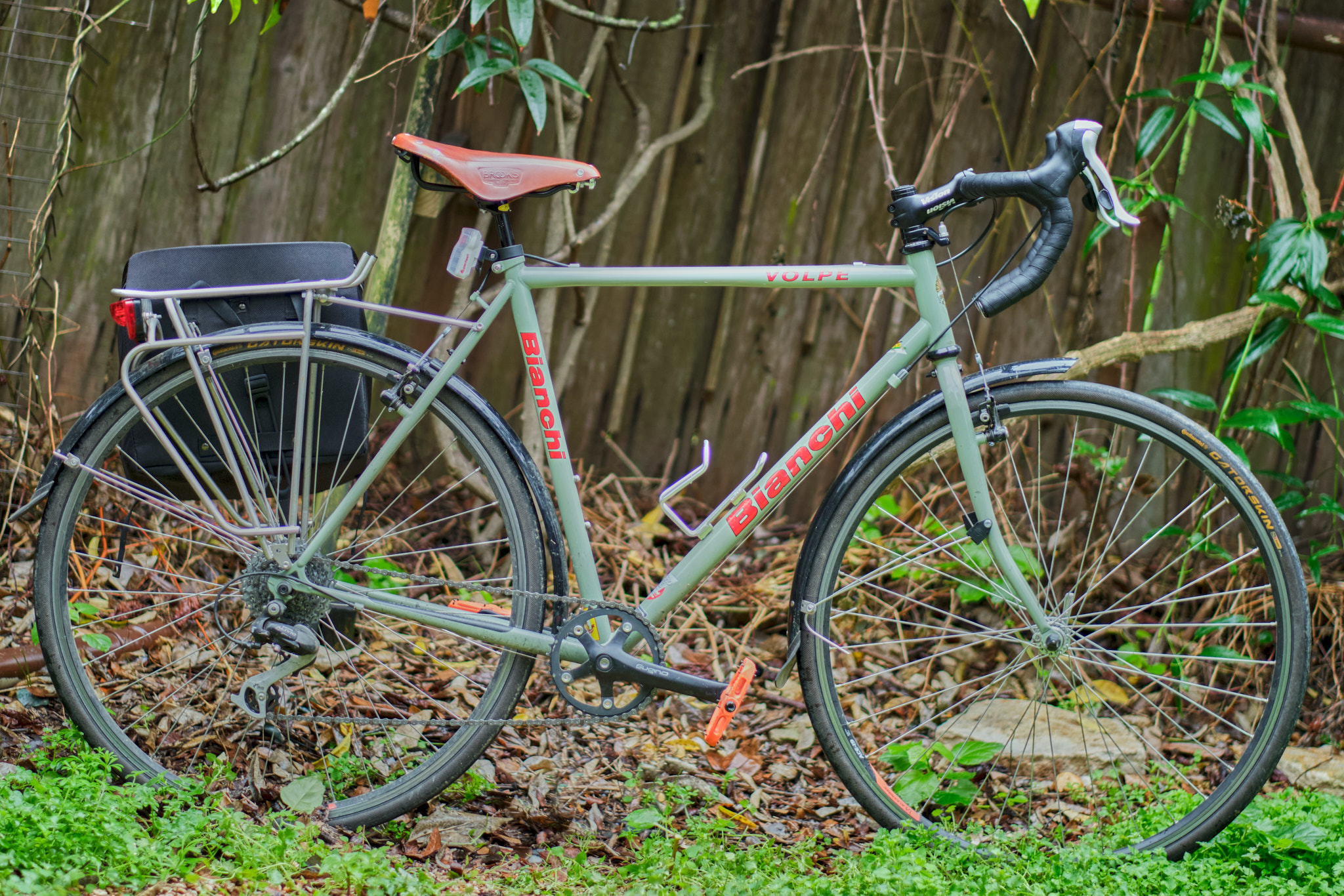
My area isn’t dense. Houses have yards, there are ugly parking lots and soulless big box stores, nonetheless, everything I need is close enough to reach by bike and I’m fortunate enough to have relatively safe streets on which to make these trips.
The most striking thing about my trips is how much I’m slowed down by automobile infrastructure. In most cases, I can reach my destination in less time than it takes to drive (especially during rush hour) utilizing sidewalks, trails and the “Idaho Stop” (civil disobedience, right?). Single-family housing, parking and excessive, land-wasting roads take up most of the space between points A and B. I, and every cyclists I see along the way, however, require very little space. This image does a good job of illustrating that:
Every additional cyclist on the road highlights the absurdity of the development patterns we have in place. Designing for this:
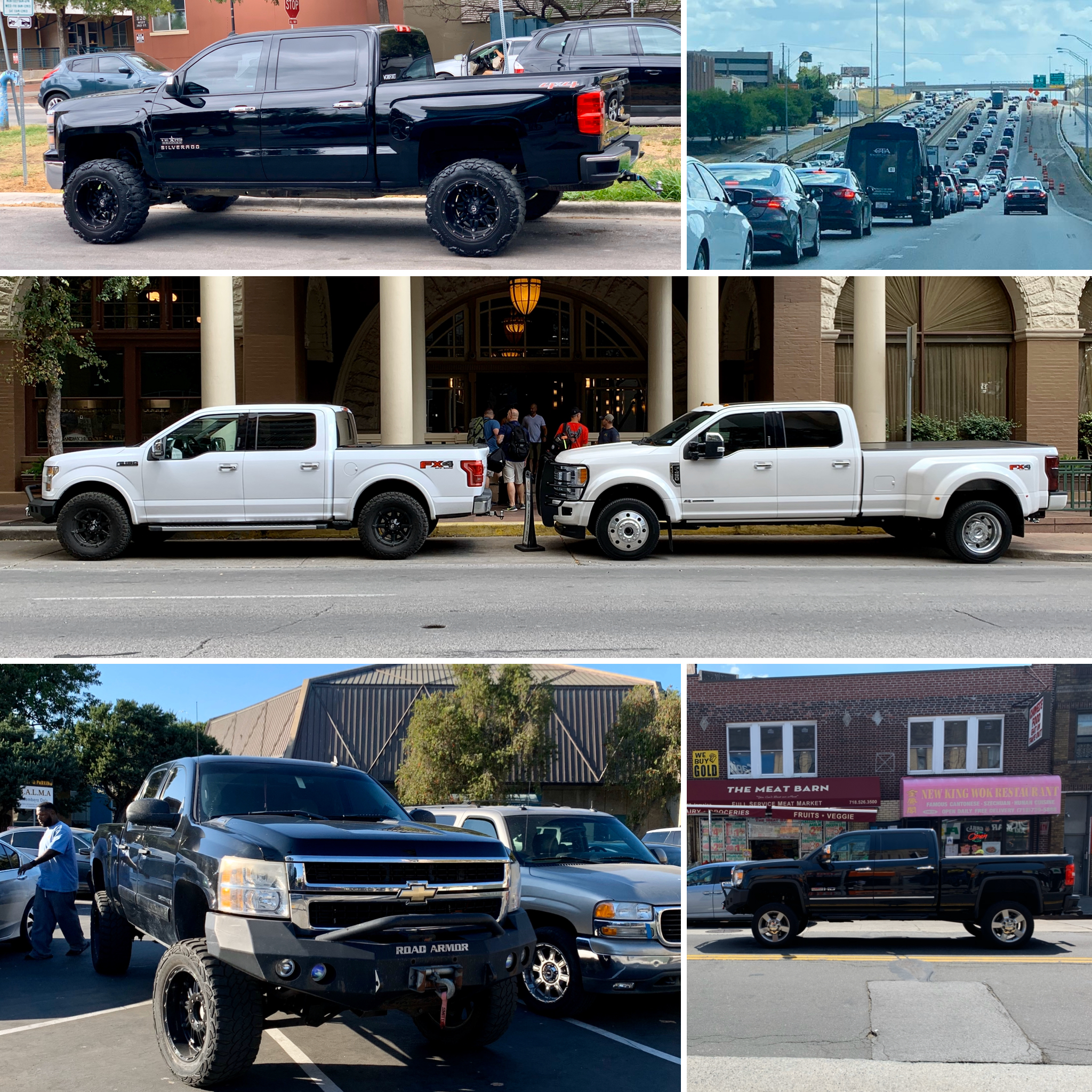
Creates this:

The above, in case you don’t recognize the reference, is an auto-centric non-place with an incredible infrastructure burden relative to its density. The generation who built this won’t be around to endure the incredible cost of its maintenance, which will either be funded through high federal/state taxes or crushing millages/assessments on the individual citizens who live here. “Freedom” to live where one desires is often brought into the conversation when sprawl and single-family housing is criticized, however, there’s nothing “free” about burdening fellow citizens with the cost of such development, or demanding that every public space be destroyed for the sake of one’s giant metal wheelchair, or a de facto car ownership requirement. By all means, choose live where you want, but let’s reconfigure the market so that true costs are reflected in those choices. Declaring the area pictured above as “freedom” is similar to one demanding that they be free to live in subsidized housing or to receive welfare.
Will glimpsing the occasional cyclist change anyone’s mind about driving or housing? Probably not immediately, but when citizens demonstrate that they can get from place to place without wrapping themselves in a 6,000 pound wheelchair and show their city that they want the ability to do so, change happens. More cyclists means more bike lanes, more awareness from drivers, more density and less parking. The most able bodied among us, especially, who want to see change, have a responsibility to get out there and ride, as it’s often the case that, while a person of stout age and fitness can make their way reasonably well through city streets, these streets aren’t yet safe enough for children, families or the elderly.
Choosing cycling (or walking, or transit, etc.) over driving is one small vote for human-scale cities and towns, for fiscally responsible and sustainable development patterns, for safe streets that value life over vehicles per hour, for mobility over isolation.
Cities are man’s greatest invention. The sprawling, auto-centric development patterns we’ve come to normalize in this post-war era are chipping away at our cities little by little. When you see someone riding their bike as a means of transportation in America, whether by necessity or choice, consider it the exemplar of all those little SUV window flags in action. Bike for your country.
